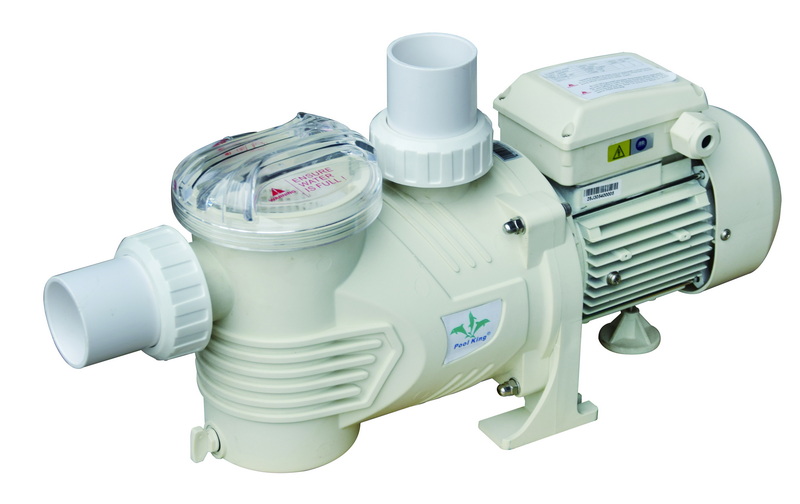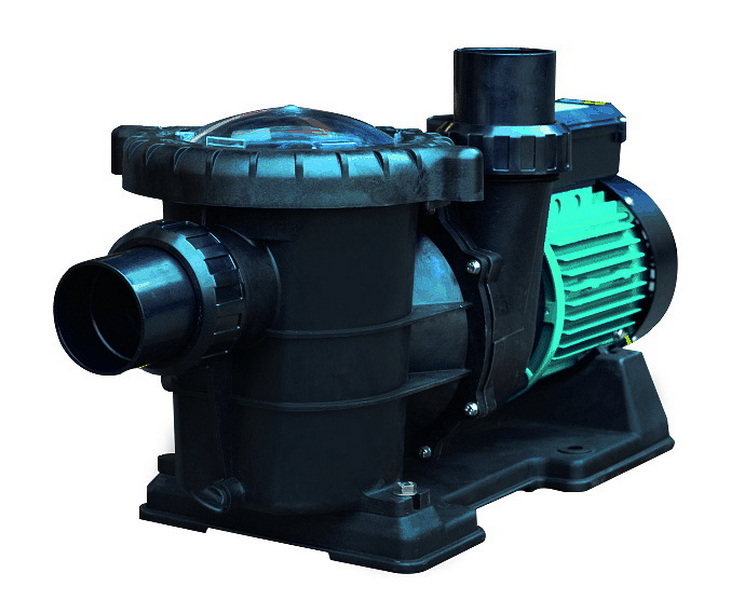Views: 222 Author: Tina Publish Time: 2025-10-26 Origin: Site








Content Menu
● Understanding Pool Pump Sizing
● Step-by-Step Pump Sizing Procedure
>> 4. Evaluate Head Pressure (TDH)
>> 5. Choose Proper Pump Curve
>> 6. Verify Electrical Requirements
● Medium-Head vs. High-Head Pumps
● Variable-Speed vs. Single-Speed Pumps
● Maintenance and Performance Optimization
● Energy Efficiency & Smart Control
● FAQ
>> 1. How long should I run my pump daily?
>> 2. Can I oversize the pump for faster cleaning?
>> 3. Is a variable-speed pump really worth the cost?
>> 4. What's the best plumbing size for this pool volume?
>> 5. How often should I backwash or clean filters?
Selecting the correct pool pump for a 30,000-gallon swimming pool is critical for maintaining clean, healthy, and energy-efficient water circulation. This comprehensive guide combines technical knowledge and modern technology insights to help homeowners, pool technicians, and commercial pool owners make the best choice.

The pump acts as the “heart” of the pool, constantly moving water through filters, heaters, and chemical systems. Proper sizing ensures optimal water turnover without wasting electricity. Using the 8-hour turnover rule:
![]()
A 30,000-gallon pool needs a pump that can sustain approximately 60–70 gallons per minute (GPM).[1][2]
- 1.5 HP pump: Suitable for moderate plumbing (≤50 ft) and simple filter systems.
- 2.0 HP pump: Best for pools with long pipe runs, multiple fittings, or added water features.
- Variable-speed pumps (VSP): Preferred for flexibility and energy efficiency per DOE 2025 standards.[2][3]
Modern 1.65 THP variable-speed models can match the output of old 1 HP single-speed pumps at half the power consumption.[3][1]
- Rectangular Pool: Length × Width × Avg. Depth × 7.5
- Circular Pool: Diameter⊃2; × Avg. Depth × 5.9
- Kidney Shape: (A + B) × Length × 0.45 × Avg. Depth × 7.5[5][1]
Aim for 1 turnover every 8 hours. For 30,000 gallons:
=62.5 GPM=62.5 GPM
- 1.5-inch PVC supports ~45 GPM.
- 2-inch PVC can handle up to 80 GPM efficiently.[1][2]
Total Dynamic Head = suction + discharge + fittings + elevation + filter loss.
For a residential 30K pool, TDH typically ranges between 50–70 ft.[2]
Select a pump whose performance curve intersects ~65 GPM at 60 ft TDH.[1]
Match 115 V or 230 V circuits; check breaker and wire ratings.[3]

| Feature | Medium-Head Pump | High-Head Pump |
|---|---|---|
| TDH Range | 30–50 ft | 50–75+ ft |
| Pipe Size | 1.5″–2″ | 2″–2.5″ |
| Ideal For | Standard residential pools | Pools with solar heating, deck jets |
| Example Models | Hayward Super Pump, Pentair SuperFlo | Pentair IntelliFlo, Jandy VS FloPro |
| Energy Use | Efficient under low resistance | Requires more watts if oversized |
| Brand & Model | Horsepower | Key Highlights | Ideal Application |
|---|---|---|---|
| Pentair IntelliFlo3 VSF | 3.95 THP | Smart sensors, wireless control, ultra-quiet | Large pools 25K–40K gal |
| Hayward TriStar VS 950 | 2.7 HP | ENERGY STAR certified, programmable speeds | 25K–35K gal setups |
| PureLine Prime VS 1.65 HP | 1.65 HP | Budget-friendly, compact, efficient | Standard installations |
| WhisperFlo VST 2.2 HP | 2.2 HP | High flow, quiet operation, self-priming | Long plumbing runs |
| Waterway Power Defender 165 | 1.65 HP | Bluetooth control, low-speed energy saver | Medium-size pools |
| Factor | Variable-Speed | Single-Speed |
|---|---|---|
| Energy Savings | Up to 90% reduction | None |
| Noise Level | Whisper quiet | Noticeable hum |
| Lifespan | 2–3× longer | Shorter due to wear |
| Operational Control | Fully programmable | Manual only |
| Regulation Compliance | Meets DOE 2025 standards | Often outdated |
Proper hydraulic design minimizes resistance and maximizes flow rate efficiency.
- Each 90° elbow adds ~5 ft of TDH.
- Shorten pipe runs, use sweep fittings instead of tight bends.
- Keep suction piping straight for 10× diameter before the pump intake to reduce turbulence.[1][2]
For a 30,000-gallon pool:
- Sand Filter: 24–27" diameter, handling 60–70 GPM.
- Cartridge Filter: 420 sq.ft. or larger.
- DE Filter: 48–60 sq.ft. for fine filtration.
Your filter's rating must exceed the pump's maximum output, preventing high pressure and backflow.[12][2]
1. Place the pump below water level if possible to enhance priming.
2. Use unions on suction and discharge lines for easy service.
3. Install check valves when using solar heating or elevated plumbing.
4. Provide ventilation for motor cooling.
5. Bond and ground according to NEC pool standards.[3][1]
- Weekly: Empty skimmer baskets and strainer debris.
- Monthly: Inspect and lubricate O-rings with food-grade lubricant.
- Quarterly: Clean filters or backwash sand media.
- Annually: Measure amperage draw and inspect electrical connections.
Proper maintenance extends pump life beyond 10 years with consistent efficiency.[3]
Advanced pool pumps use brushless motors and digital controllers to adapt RPM automatically depending on water flow demand. Many 2025 models offer mobile app integration, real-time diagnostics, and remote scheduling.[11][3]
These smart systems are particularly effective for export markets and OEM projects, optimizing energy consumption while maintaining peak performance.
For a 30,000-gallon pool, the recommended pump capacity ranges between 1.5–2 HP single-speed or 1.65–2.7 HP variable-speed. Target a turnover rate of 60–70 GPM while keeping Total Dynamic Head around 60 feet.
Variable-speed pumps like the Pentair IntelliFlo3 VSF and Hayward TriStar VS 950 are ideal, combining precision control, efficiency, and quiet performance.
Proper sizing, compatible filtration, and thoughtful installation ensure your pool remains crystal-clear, cost-effective, and compliant with global energy standards.

8 hours ensures full turnover. Adjust up to 10 during summer or heavy use.[2]
No. Oversizing causes high pressure, energy waste, and equipment damage.[1][3]
Yes — up to 90% energy savings offers payback in 2–3 seasons.[11][3]
2-inch PVC optimizes efficiency, minimizing resistance and noise.[2][1]
Sand filters every 4–6 weeks; cartridge filters every 2–3 months depending on debris.[2]
[1](https://blog.royalswimmingpools.com/blog/what-horse-power-pump-should-i-get-for-my-pool)
[2](https://lesliespool.com/blog/pool-pump-sizing-101.html)
[3](https://www.swimuniversity.com/variable-speed-pool-pumps/)
[4](https://www.youtube.com/watch?v=P7aptIXRN3U)
[5](https://www.aquagem.com/news/pool-pump-sizing-guide-for-your-swimming-pool)
[6](https://pool.dreametech.com/blogs/blog/what-size-pool-pump-do-you-need-an-easy-sizing-guide)
[7](https://www.hayward-pool.co.uk/article/configurators/pump-configurator)
[8](https://www.inyopools.com/HowToPage/how_to_size_a_pool_pump_for_your_in_ground_pool_.aspx?CommentPage=1)
[9](https://nevadapoolsupplyofaz.com/blogs/learning-center-pool-spa-guides-tips/high-performance-pool-pumps-for-large-pools)
[10](https://hayward.com/products/pool-pumps.html)
[11](https://www.vitafilters.com/blogs/news/2025-best-pool-pumps-why-variable-speed-is-the-future)
[12](https://www.inyopools.com/HowToPage/how-to-size-a-pool-filter.aspx?CommentPage=1)
